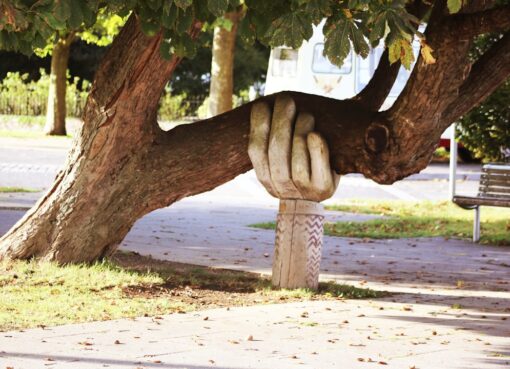Mastering the Art of Pipe Threading

Pipe threading is a process used to create screw threads on the end of a pipe. This is typically done to allow pipes to be connected and create a secure, leak-proof seal. The process involves using a specialized tool called a pipe threader, which is designed to cut the threads into the pipe. Pipe threading can be done on a variety of materials, including steel, copper, and plastic.
The most common type of pipe threading is tapered threading, which creates a tight seal as the threads are screwed together. This is achieved by cutting the threads at a slight angle, allowing them to wedge together as they are tightened. Another type of threading is parallel threading, which creates straight threads that do not taper. This type of threading is often used for pipes that need to be easily assembled and disassembled.
Key Takeaways
- Pipe threading is the process of creating screw threads on the end of a pipe to facilitate connection with other pipes or fittings.
- The right tools and equipment for pipe threading include a pipe threading machine, dies, cutting oil, and a pipe vise.
- Before threading a pipe, it must be cleaned, deburred, and measured to ensure proper threading.
- Mastering the technique of pipe threading requires proper alignment, consistent pressure, and regular application of cutting oil.
- Common issues in pipe threading include chattering, dull or damaged dies, and improper alignment, which can be resolved with troubleshooting techniques.
Selecting the Right Tools and Equipment
When it comes to pipe threading, having the right tools and equipment is essential for achieving professional results. The most important tool for pipe threading is the pipe threader, which is available in manual and electric models. Manual pipe threaders are operated by hand and are suitable for small-scale projects, while electric pipe threaders are more powerful and can handle larger pipes.
In addition to a pipe threader, you will also need a pipe vise to hold the pipe securely in place during threading. A cutting oil is also essential for lubricating the pipe and reducing friction during the threading process. Other tools that may be required include a reamer for removing burrs from the inside of the pipe, and a pipe wrench for tightening and loosening fittings.
Preparing the Pipe for Threading
Before you begin threading a pipe, it is important to properly prepare the pipe to ensure a clean and accurate thread. The first step is to measure and mark the length of the pipe that needs to be threaded. This will help you determine where to start and stop the threading process. Once the pipe is marked, it should be securely clamped in a pipe vise to prevent it from moving during threading.
Next, it is important to clean the end of the pipe to remove any dirt, debris, or rust that could interfere with the threading process. A wire brush or emery cloth can be used to clean the surface of the pipe and ensure a smooth finish. After cleaning, it is recommended to apply cutting oil to the end of the pipe to lubricate it and reduce friction during threading.
Mastering the Technique of Pipe Threading
Pipe threading requires a steady hand and precise technique to achieve professional results. The first step in the threading process is to align the pipe threader with the end of the pipe and secure it in place. Once the threader is in position, it should be turned slowly and steadily to cut the threads into the pipe. It is important to apply steady pressure and avoid forcing the threader, as this can result in uneven or damaged threads.
As you thread the pipe, it is important to periodically reverse the direction of the threader to break off any chips or debris that may accumulate in the threads. This will help ensure a clean and accurate thread. Once the threading is complete, it is important to use a reamer to remove any burrs or rough edges from the inside of the pipe. This will help ensure a proper fit when connecting fittings or other pipes.
Troubleshooting Common Issues
While pipe threading is a straightforward process, there are some common issues that can arise during threading. One common issue is thread chattering, which occurs when the threader vibrates or jumps as it cuts the threads. This can result in uneven or damaged threads. To prevent thread chattering, it is important to use cutting oil and apply steady pressure while threading.
Another common issue is thread binding, which occurs when the threads become stuck or difficult to turn. This can happen if the threads are not properly aligned or if there is debris in the threads. To resolve thread binding, it is important to reverse the direction of the threader and use a wire brush to remove any debris from the threads.
Safety Precautions and Best Practices

When it comes to pipe threading, safety should always be a top priority. It is important to wear protective gear, such as gloves and safety glasses, to protect against cuts and debris during threading. In addition, it is important to ensure that the work area is well-ventilated to prevent exposure to cutting oil fumes.
It is also important to follow best practices for using cutting oil, such as applying it generously to the end of the pipe before threading and periodically adding more oil as needed. This will help reduce friction and heat during threading, resulting in cleaner and more accurate threads.
Advanced Tips and Tricks for Efficient Pipe Threading
For those looking to take their pipe threading skills to the next level, there are several advanced tips and tricks that can help improve efficiency and accuracy. One advanced technique is using a die head instead of a traditional pipe threader for larger pipes. A die head allows for faster threading and can produce more consistent results.
Another advanced tip is using a power drive machine for electric pipe threaders. Power drive machines are designed to hold and rotate large pipes, making it easier to thread long sections of pipe quickly and accurately.
In addition, using high-quality cutting oil can make a significant difference in the quality of the threads produced. Look for cutting oils specifically designed for pipe threading, as they are formulated to provide superior lubrication and cooling properties.
By understanding the basics of pipe threading, selecting the right tools and equipment, preparing the pipe for threading, mastering the technique of pipe threading, troubleshooting common issues, following safety precautions and best practices, and implementing advanced tips and tricks for efficient pipe threading, you can achieve professional results and create secure, leak-proof seals for your piping projects.
Looking for a reliable pipe threader? Check out our latest article on the benefits of using a high-quality pipe threader for your plumbing projects. Whether you’re a professional plumber or a DIY enthusiast, having the right tools can make all the difference. In our article, we discuss the importance of precision threading and how it can save you time and effort. For more tips and recommendations on plumbing tools, visit CopperCleanUS for expert advice and top-notch products.
FAQs
What is a pipe threader?
A pipe threader is a tool used to create threads on the end of a pipe, allowing it to be connected to other pipes or fittings.
How does a pipe threader work?
A pipe threader works by using a set of dies to cut threads into the end of a pipe. The pipe is clamped securely in the threader, and the dies are then turned onto the pipe to create the threads.
What are the different types of pipe threaders?
There are manual pipe threaders, which require physical effort to turn the dies onto the pipe, and there are also electric or pneumatic pipe threaders, which use power to turn the dies.
What are the common uses of a pipe threader?
Pipe threaders are commonly used in plumbing, HVAC, and other industries where pipes need to be connected together securely.
What are the safety precautions when using a pipe threader?
Safety precautions when using a pipe threader include wearing appropriate personal protective equipment, ensuring the pipe is securely clamped in the threader, and following proper operating procedures to avoid injury.
Leave a Reply
You must be logged in to post a comment.



Leave a Comment